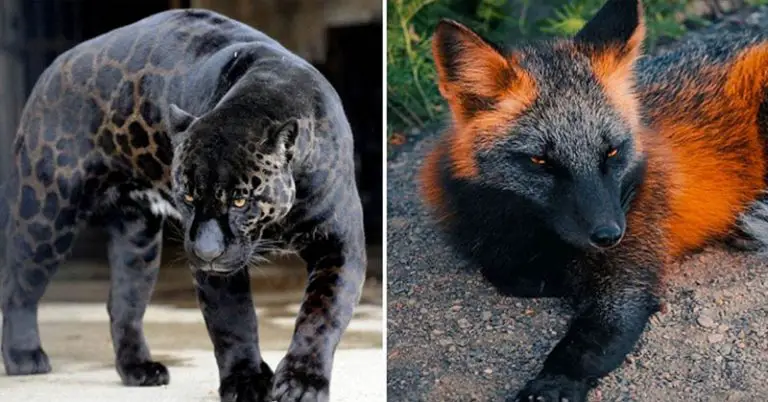If you’ve ever had the opportunity to spot an albino animal, then you know how unique they can be. Did you know, however, that the opposite condition can also exist? That’s right – melanistic animals, or animals who appear black instead of their intended color – are real, and they are as incredible as they sound.
Melanistic Animals
Albinism in animals is a rare genetic mutation that causes the animal to lose all of the pigmentations in its skin. If the animal has fur, their fur will also be white. (2)
Melanism occurs in the same way, with the mutation of genes, just not the same ones. The mutation of these specific genes causes more dark pigmentation, which is why the animal appears black. This can be seen in a variety of animals, however, it is more common in some than others. Panthers, for example, are actually melanistic jaguars. The same species, just with a genetic mutation. (3)
Pseudo-melanism
Also known as abundism, pseudo-melanism is another type of pigmentation that can cause animals to appear darker than they should be. In this case, the spots or stripes of the animal, such as those seen on jaguars and zebras, are much larger than normal. This gives them the appearance of being much darker, though not necessarily fully black. (1)
In both cases, this can be passed down through generations (adaptive melanism), but can also be a part of evolution. For example, black panthers’ dark hue makes it much easier to stalk prey at nighttime or in the dark cover of the jungle. (1, 2)
Other types of Pigmentation
Albinism and Melanism aren’t the only pigmentation variations to exist in the wild. Others include (3):
- Erythrism: extra red and orange pigment.
- Xanthism: extra yellow pigment combined with a lack of other pigmentation.
- Axanthism: lack of yellow pigmentation. This is how some frog species are bright blue instead of green.
These gorgeous creatures are just another reminder of how amazing nature can be. If you ever get to see a melanistic animal in the wild, you should consider yourself very lucky.
Read More: Wildlife Photographer Captures ‘Never Before Seen’ Yellow Penguin
Sources
- ‘Albino animals, explained’ National Geographic Jani Hall. Published March 6, 2019
- Nature’s colors – Albinism, melanism, and other genetic variations Children’s Eternal Rainforest Eduardo Venegas Castro.

